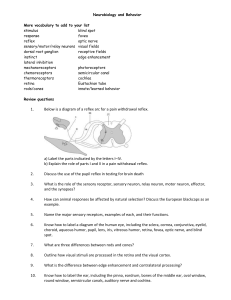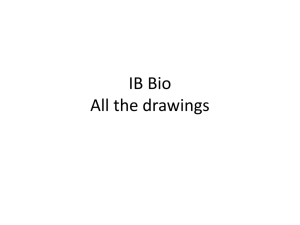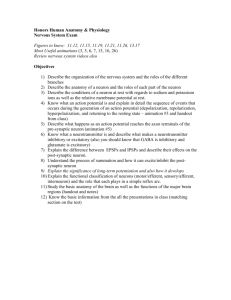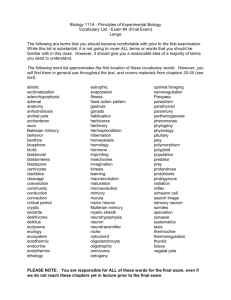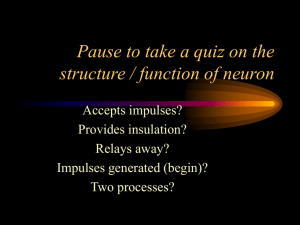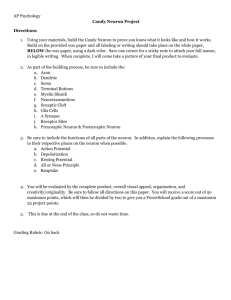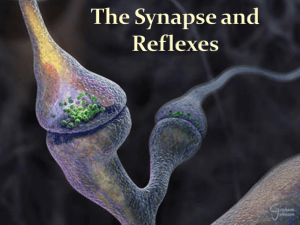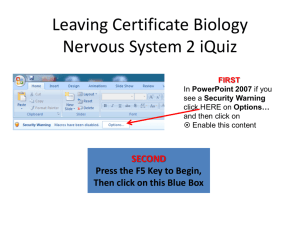Pictures and Drawings for Semister 2
advertisement
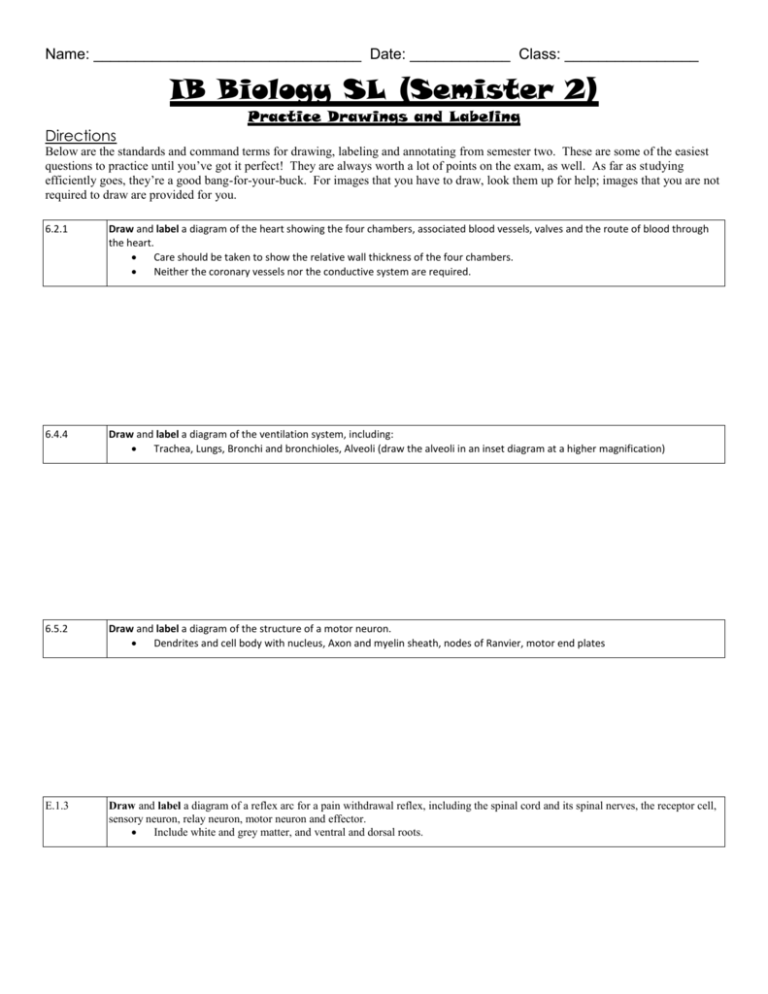
Name: ________________________________ Date: ____________ Class: ________________ IB Biology SL (Semister 2) Practice Drawings and Labeling Directions Below are the standards and command terms for drawing, labeling and annotating from semester two. These are some of the easiest questions to practice until you’ve got it perfect! They are always worth a lot of points on the exam, as well. As far as studying efficiently goes, they’re a good bang-for-your-buck. For images that you have to draw, look them up for help; images that you are not required to draw are provided for you. 6.2.1 Draw and label a diagram of the heart showing the four chambers, associated blood vessels, valves and the route of blood through the heart. Care should be taken to show the relative wall thickness of the four chambers. Neither the coronary vessels nor the conductive system are required. 6.4.4 Draw and label a diagram of the ventilation system, including: Trachea, Lungs, Bronchi and bronchioles, Alveoli (draw the alveoli in an inset diagram at a higher magnification) 6.5.2 Draw and label a diagram of the structure of a motor neuron. Dendrites and cell body with nucleus, Axon and myelin sheath, nodes of Ranvier, motor end plates E.1.3 Draw and label a diagram of a reflex arc for a pain withdrawal reflex, including the spinal cord and its spinal nerves, the receptor cell, sensory neuron, relay neuron, motor neuron and effector. Include white and grey matter, and ventral and dorsal roots. E.2.2 Label a diagram of the structure of the human eye. The diagram should include: sclera, cornea, conjunctiva, eyelid, lens, choroid, aqueous humour, pupil, iris, vitreous humour, retina, fovea, optic nerve, blind spot E.2.3 Annotate a diagram of the retina to show the cell types and the direction in which light moves. Include names of rod and cone cells, bipolar neurons and ganglion cells. E.2.6 Label a diagram of the ear. Include: Pinna, eardrum, bones of the middle ear, oval window, round window, semicircular canals, auditory nerve, cochlea 6.6.1 Draw and label diagrams of the adult male and female reproductive systems. 6.6.3 Annotate a graph showing hormone levels in the menstrual cycle, illustrating the relationship between changes in hormone levels and ovulation, menstruation and thickening of the endometrium. 5.2.1 Draw and label a diagram of the carbon cycle to show the processes involved. The details of the carbon cycle should include the interaction of living organisms and the biosphere through the processes of: Photosynthesis and cell respiration Fossilization and combustion 5.3.2 Draw and label a graph showing a sigmoid (S-shaped) population growth curve. Venn there done That Directions Below are some terms and concepts that can be best learned by comparing them. Make a Venn diagram and fill it with as much information as you can. By forcing yourself to compare one idea with another idea, you learn and be able to remember a tremendous amount about both ideas! 1. Virus and bacteria. (discuss their structure, also discuss how the human body defends against these pathogens) 2. Mitosis and meiosis 3. Artery and vein and capillary 4. Gas Exchange and ventilation and cell respiration 5. Rod cells of the eye and hair cells of the ear 6. Innate behavior and learned behavior 7. Apex predators and detritivores 8. Natural selection and artificial selection 9. Homo neanderthalensis and Homo sapiens 10. Coniferophyta and Angiospermophyta 11. Annelida and Mollusca
